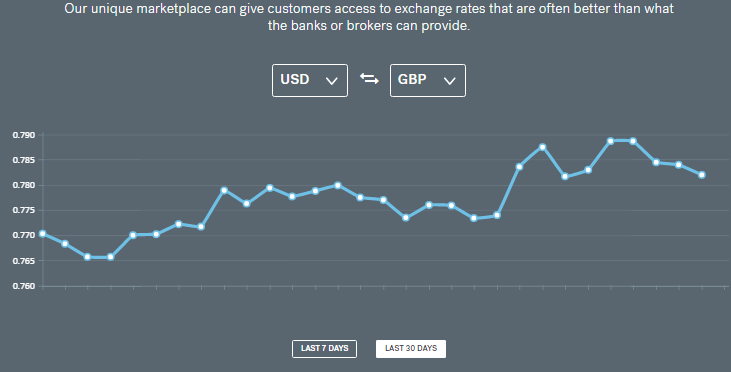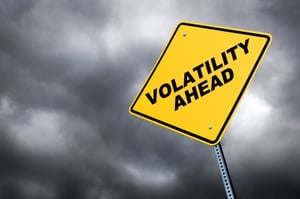Embracing volatility: How To Take Advantage Of Market Uncertainty
How To Take Advantage Of Market Uncertainty
“Markets hate uncertainty”. That’s one unhelpful cliché that needs to be consigned to a deep black hole in a galaxy far far away. Markets don’t hate uncertainty, they simply become more volatile when the immediate economic or political climate becomes harder to predict. The challenge for consumers is to ensure they make the right decisions during such times.
The wall-to-wall media coverage of global financial markets will refer to terms such as “volatility” and “currency exposure”, and talk up the relative strength or weakness of the world’s major currencies.
How do these seemingly complicated concepts impact on the day-to-day lives of individuals and SMEs? We decided to take a look at how our customers are using the CurrencyFair platform and marketplace to make the most of periods of uncertainty.
What is market volatility?
To put it simply, currency volatility refers to the uncertainty about the size of changes in a currency’s value. In a highly volatile climate, the currency’s price can be spread over a larger range of values. This means that the relative strength or weakness of one currency against another can change substantially.

The graph above shows us a strengthening USD and a weakening GBP over the past 30 days. The increased volatility around the UK general election caused a spike on 9th June, where 1 USD would have bought you 0.7875 GBP, an increase of more than 1% on the days leading up to polling day.
What does volatility mean for consumers?

A strong US Dollar means that American companies who are importing from the UK and being billed in GBP, will now be paying less. Likewise, consumers who are purchasing goods from the UK or travelling to Britain, will be getting better value for their money. On the flip side, anyone selling GBP and buying USD, or travelling to the US, will now be paying more.
If we were to take our graph above and look back at the previous 12 months (pre-Brexit), we’d see an even bigger spread in the USD-GBP pricing, with a low of 0.67098 and a high of 0.83714.
So a customer transferring $10,000 at its peak would have gotten £8,371, and at its trough would have received £6,709. These are substantial differences amounting to tangible numbers, emphasising the importance for consumers and businesses to do proper investigation into their currency exposure.
In a previous blog, we mentioned how political events are regular contributors to increased currency volatilities, as witnessed again by last week’s UK election. This is a trend that will inevitably continue.
How CurrencyFair customers are managing volatility
Users of CurrencyFair’s innovative platform have been taking advantage of last week’s volatility of UK Sterling. By trading on our marketplace and setting the rate they wanted to trade at, some consumers have managed to get a better deal on their trades.
An example:
On 7th June, the day before the election, with volatility on the rise, one of our customers placed a marketplace trade, setting his USD-GBP rate at 0.7978. At that exact time, the interbank rate was 0.7743.
Using a bank where fees are typically around 3%, the price this customer would have received would be closer to 0.7511 (ie 0.7743 * 0.97).
The CurrencyFair rate of 0.7978 is inclusive of fees, which are on average 0.4%
As market volatility increased on 9th June after the election result became known, this customer’s exchange was matched at the rate requested. This resulted in a rate 6.2% better than would have been achieved with the bank at the time of placing the trade, leading to substantial savings for the customer.
For a 5,000 USD transfer, this would have put £233.50 more in his pocket.
For a 20,000 USD transfer – this would have put £934 more in his pocket.
Legacy banking providers and the vast majority of FX platforms do not offer peer-to-peer currency exchanges, and don’t give the option of setting a price and waiting for the market to move. This separates CurrencyFair from other currency platforms, helping our customers make the most of periods of volatility.
As far as clichés are concerned, we want to help our customers embrace market uncertainty, and make hay while the sun shines.
Related Articles
Search
Popular Posts
-
Expat guide: cheapest places to live in the world
March 31, 2022 -
How to find your unique transaction reference (UTR) number
March 31, 2023 -
Currency symbols around the world
February 9, 2022


